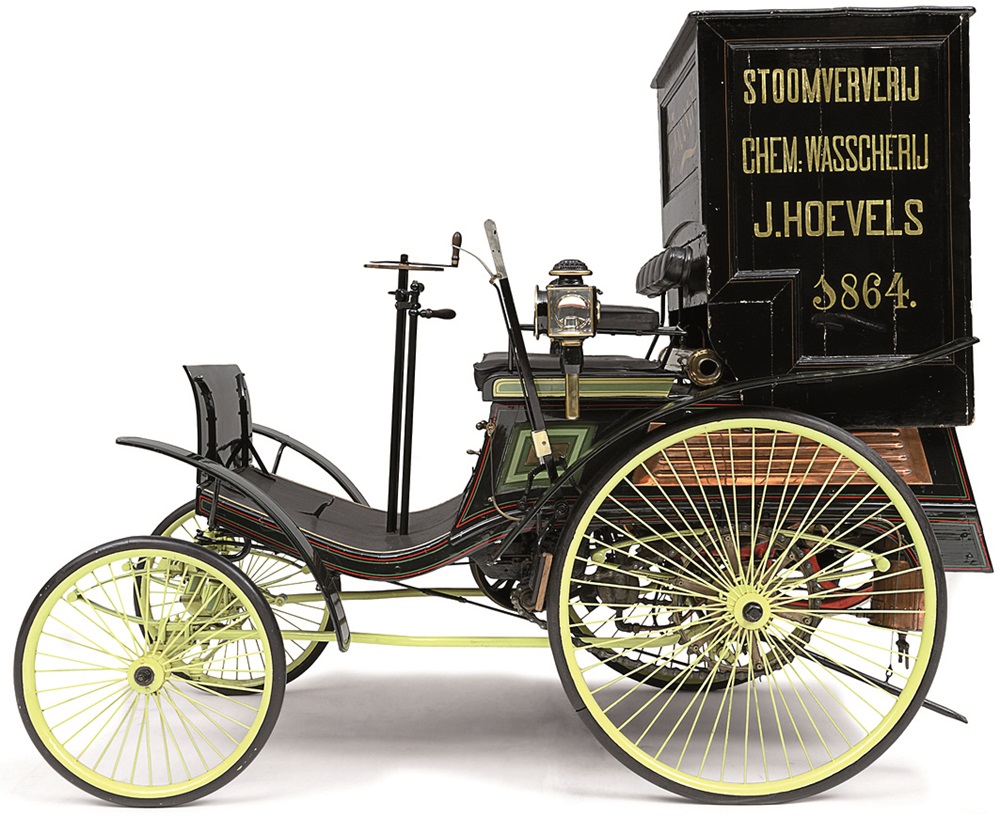1894 3-HP No.1 Ideal Van

The descriptions of the Classic Cars in the Directory were partly generated or supplemented with the help of artificial intelligence (AI). The content may occasionally not always be entirely accurate or factually correct despite careful checking.
The Benz 3-HP No.1 Ideal Van 1894 represents a groundbreaking innovation in the realm of commercial vehicles. This vehicle was produced at a time when the automobile industry was still in its infancy, with manufacturers focused on creating practical and efficient ways to transport people and goods using the latest advances in gasoline-powered engines.
The 3-HP No.1 Ideal Van 1894 is a four-wheeled vehicle that features a single-cylinder, four-stroke engine that produces 3 horsepower. The engine is located at the rear of the vehicle and powers the rear wheels via a chain mechanism. This configuration allowed for a lower center of gravity and improved handling, making it easier to navigate the vehicle through busy city streets.
The van's light but sturdy frame is constructed using a combination of timber and steel, which ensures durability and longevity while minimizing weight. This, combined with the engine's power, allows for a maximum speed of 12 mph, which was a considerable feat for its time.
The vehicle's innovative design is also evident in its steering mechanism. The steering wheel is located inside the vehicle, and the front wheels are turned via a steering linkage that runs beneath the body of the van. This unique configuration provided better steering control, which was critical for maneuvering the vehicle in tight spaces.
The 3-HP No.1 Ideal Van 1894 is a small but capable vehicle, measuring only 3.25 meters in length and 1.45 meters in width. However, its cargo capacity makes it ideal for transporting small goods, making it a popular choice for merchants and retailers in the late 19th century.
Despite its small size, the vehicle's engine is surprisingly efficient, boasting a fuel consumption rate of only 2.5 liters per 100 kilometers. This made it an economical and practical option for small business owners who needed a reliable vehicle to transport their goods.
Overall, the Benz 3-HP No.1 Ideal Van 1894 is a remarkable achievement of automotive engineering. Its technical innovations set a new standard for commercial vehicles and paved the way for future advancements in the industry. Today, it remains a historical icon that serves as a testament to the ingenuity and courage of early automotive pioneers.
Milestones
- Development of the internal combustion engine by Carl Benz in 1886. - Launch of Benz's first automobile - the Benz Patent-Motorwagen - in 1886. - Introduction of Benz's 3-HP No.1 Ideal Van in 1894. - The van had a 2-cylinder horizontally mounted engine. - It had a payload capacity of 300 kg and could travel at a top speed of 20 km/h. - The vehicle's chassis and body were made of wood. - The van was powered by gasoline and required manual starting. - It had a chain-drive transmission and a differential rear axle. - The van was marketed for commercial use, especially for deliveries and transportation of goods. - Production of the 3-HP No.1 Ideal Van continued until 1901, with over 1200 units produced.Technical
• Engine: Single-cylinder four-stroke engine • Power: 3 horsepower • Transmission: Two-speed transmission • Top Speed: 12 mph • Fuel: Gasoline / Naphtha • Fuel consumption: 1.5 liters per 100 km • Chassis: Steel tubing • Suspension: Elliptic leaf springs • Brakes: Foot pedal brake for the rear wheel • Weight: 350 kg • Dimensions: 2.8m long, 1.3m wide, 1.6m tall • Capacity: Two passengers • Steering: Direct steering column • Lighting: Oil lamps • Tires: Solid rubber tires